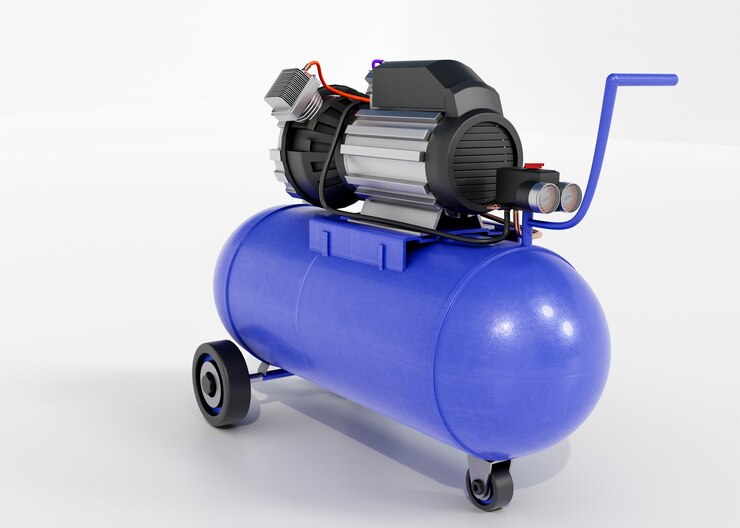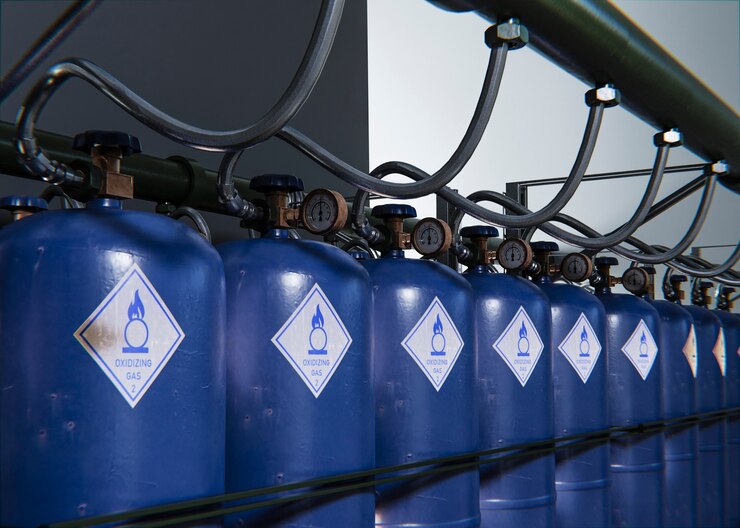Exploring the World of Ammonia Gas Compressors, Ice Making, and Cold Room Plants: A Comprehensive Guide

In the realm of industrial refrigeration, ammonia gas compressors play a pivotal role in various applications, ranging from cold room plants to ice-making facilities. As a top manufacturer in this field, our commitment is to demystify the complexities surrounding ammonia-based systems and provide insights into their working mechanisms, applications, benefits, and challenges.
What is an Ammonia Compressor?
An ammonia compressor is a critical component in industrial refrigeration systems that utilize ammonia as a refrigerant. Its primary function is to compress low-pressure ammonia gas into high-pressure gas, facilitating the refrigeration cycle. The compressor is at the heart of the system, ensuring the continuous circulation of ammonia for effective cooling.
Types of Compressors Used in Ammonia Systems
Ammonia systems commonly employ two main types of compressors: screw compressors and reciprocating compressors. Each type has its unique advantages and is selected based on the specific requirements of the application. Screw compressors offer continuous operation and energy efficiency, while reciprocating compressors are known for their versatility and suitability for varying load conditions.
Common Issues with Ammonia Compressors
Despite their reliability, ammonia compressors can face challenges such as oil foaming, vibration, and wear. Regular maintenance and monitoring are crucial to address these issues and ensure the longevity and efficiency of the compressor.
How Does Ammonia Leak Affect the Compressor?
Ammonia leaks pose serious risks, not only to human safety but also to the compressor itself. The escape of ammonia can lead to a decrease in refrigerant levels, causing the compressor to work harder and potentially resulting in damage. Timely detection and repair of leaks are essential to prevent adverse effects on the compressor.
How Nitrogen is Utilized in Ammonia Compressor Systems
Nitrogen is often used as a purge gas in ammonia compressor systems. It helps eliminate moisture and oxygen from the system, preventing corrosion and ensuring the integrity of the refrigeration cycle. Proper nitrogen management is crucial for maintaining the efficiency and reliability of ammonia compressors.
Ammonia Refrigeration Systems in Cold Room Plants
Cold room plants rely on efficient refrigeration systems to preserve perishable goods. Ammonia, with its excellent thermodynamic properties, is a preferred choice for cold room applications. These systems ensure precise temperature control and energy efficiency, crucial factors in the storage and preservation of various products.
Overview of Ammonia Refrigeration Systems
Ammonia refrigeration systems consist of key components, including compressors, condensers, evaporators, and control valves. These systems operate on the principle of vapor compression, where ammonia undergoes phase changes to absorb and release heat, resulting in effective cooling.
Importance of Control Valves in Ammonia Refrigeration Systems
Control valves play a critical role in regulating the flow of ammonia within the refrigeration system. Proper valve selection and maintenance are essential for achieving optimal performance, energy efficiency, and temperature control in industrial refrigeration processes.
Using Ammonia for Ice Making Plants
Ammonia’s versatility extends to ice-making plants, where it is utilized for its excellent heat absorption properties. The efficient operation of ammonia compressors in these plants ensures a continuous supply of high-quality ice for various industrial and commercial applications.
Industrial Refrigeration Applications of Ammonia Systems
Apart from cold room plants and ice-making facilities, ammonia refrigeration systems find application in diverse industries such as food processing, chemical manufacturing, and pharmaceuticals. Their reliability and efficiency make them a preferred choice for large-scale industrial refrigeration.
Efficient Use of Ammonia in Cold Room Plants
Efficiency is paramount in cold room plants, where precise temperature control is essential for preserving goods. Ammonia systems, when designed and maintained with a focus on efficiency, offer sustainable and cost-effective solutions for cold storage applications.
Working Mechanism of Ammonia Gas Compressors
The working mechanism of ammonia gas compressors involves the compression of low-pressure ammonia vapor to high pressure, creating conditions for effective heat exchange and cooling. Understanding this mechanism is fundamental to optimizing the performance of the compressor.
Understanding the Compression Process in Ammonia Gas Compressors

The compression process in ammonia gas compressors involves several stages, each contributing to the overall efficiency of the system. From suction to discharge, a thorough understanding of these processes enables engineers and operators to fine-tune the system for optimal performance.
Comparison of Screw Compressors and Reciprocating Compressors in Ammonia Systems
Screw compressors and reciprocating compressors are two common types used in ammonia systems. A detailed comparison of their advantages and limitations aids in selecting the most suitable compressor for specific applications, ensuring both energy efficiency and reliability.
Impact of Liquid Ammonia on Gas Compression
The presence of liquid ammonia in the compressor can have significant implications for its performance. Liquid slugging can lead to damage and reduced efficiency. Proper system design, including effective separators and control mechanisms, is crucial to prevent the adverse effects of liquid ammonia on gas compression.
Role of High-Speed and Low-Speed Compressors in Ammonia Applications
High-speed and low-speed compressors offer different benefits depending on the requirements of the application. High-speed compressors excel in applications with varying loads, while low-speed compressors provide enhanced efficiency and reliability in constant-load scenarios. Proper selection is key to achieving optimal performance.
Importance of Fittings and Valves in Ammonia Gas Compressors
Fittings and valves play a crucial role in ensuring the integrity of ammonia gas compressors. Proper selection, installation, and maintenance of these components are essential for preventing leaks, reducing energy consumption, and prolonging the lifespan of the compressor.
Usage of Ammonia in Refrigeration Technology
Ammonia’s use in refrigeration technology extends beyond traditional applications. Its eco-friendly properties and thermodynamic efficiency position it as a sustainable choice for modern refrigeration needs, aligning with the growing emphasis on environmental responsibility.
Anhydrous Ammonia: Importance in Refrigeration Applications
Anhydrous ammonia, devoid of water content, is a preferred choice in refrigeration applications due to its purity and stability. Its use ensures consistent performance and prevents issues associated with water presence, such as corrosion and freezing.
Ammonia Vapor vs. Ammonia Gas in Refrigeration Systems
Distinguishing between ammonia vapor and gas is crucial for optimizing refrigeration systems. Understanding their respective properties and behaviors aids in designing systems that operate efficiently, ensuring the longevity of compressors and other components.
Effective Water Treatment for Ammonia-Based Refrigeration Systems
Water contamination poses a significant risk in ammonia-based refrigeration systems. Implementing effective water treatment measures is essential to prevent corrosion, fouling, and other issues that can compromise the efficiency and reliability of the system.
Fertilizer and Industrial Applications of Ammonia
Beyond its role in refrigeration, ammonia is a key component in the production of fertilizers and various industrial processes. Its versatility and importance in these applications further highlight its significance in sustaining agriculture and industrial development.
Environmental Impact and Control Measures for Ammonia Use
While ammonia is recognized for its eco-friendly properties, it is crucial to implement control measures to minimize potential environmental impact. Proper handling, storage, and disposal practices contribute to ensuring responsible and sustainable use of ammonia in industrial settings.
Understanding the Benefits and Challenges of Ammonia in Refrigeration
Ammonia offers numerous benefits, including high energy efficiency, low environmental impact, and cost-effectiveness. However, challenges such as toxicity and safety concerns necessitate careful consideration and adherence to best practices in handling and managing ammonia-based systems.
Advantages of Using Ammonia in Refrigeration Technology
The advantages of using ammonia in refrigeration technology are manifold. Its thermodynamic properties contribute to efficient heat transfer, and its status as a natural refrigerant aligns with the global push for environmentally friendly solutions. Additionally, ammonia’s widespread availability and cost-effectiveness make it a preferred choice in various applications.
Challenges and Risks Associated with Ammonia Refrigeration Systems
While ammonia is a reliable refrigerant, it is not without challenges and risks. From safety concerns to regulatory compliance, addressing these issues requires a comprehensive approach, including proper training, maintenance, and emergency response planning.
Exploring Alternatives to Ammonia in Industrial Refrigeration
As the industry evolves, exploration of alternatives to ammonia becomes essential. While ammonia remains a front-runner, emerging refrigerants and technologies offer potential solutions to address specific challenges and requirements in industrial refrigeration.
Shift towards Eco-Friendly Refrigerants in Cold Room Plants
The global shift towards eco-friendly refrigerants aligns with environmental sustainability goals. Cold room plants are increasingly adopting alternative refrigerants with lower global warming potential (GWP) to reduce their carbon footprint and comply with evolving regulations.
Future Innovations in Ammonia Refrigeration and Cold Room Technology
The future of ammonia refrigeration and cold room technology holds exciting possibilities. Innovations in compressor design, control systems, and materials promise enhanced efficiency, safety, and sustainability. Staying at the forefront of these advancements is key for manufacturers and operators alike.
In conclusion, the world of ammonia gas compressors, ice-making, and cold room plants is dynamic and multifaceted. As a leading manufacturer, our commitment to excellence extends beyond providing high-quality equipment to offering valuable insights and knowledge. By understanding the intricacies of ammonia systems, we empower industries to make informed decisions, ensuring the efficient and sustainable use of this versatile refrigerant in diverse applications.



